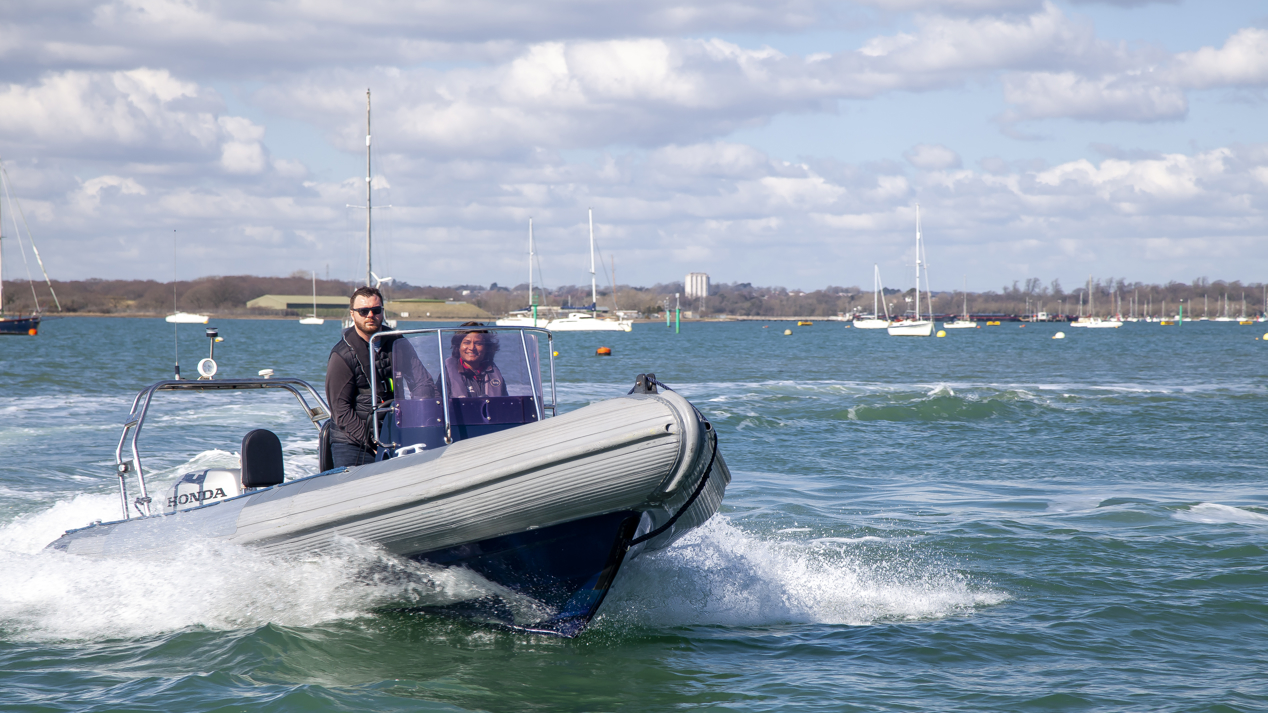Distress flares
Traditional pyrotechnic distress flares are listed in Annex IV of COLREG as an internationally recognised signal which can be used to indicate that you are in distress and need assistance
Annex IV of COLREG lists a rocket parachute flare, a hand flare showing a red light and a smoke signal giving off orange-coloured smoke as possible distress signals.
In practice a vessel in distress may use distress flares, both to indicate that they are in difficulty and to pinpoint their location to those rendering assistance.
Types of pyrotechnic flare
Red parachute rocket flares
The red parachute rocket flare provides a long range signal by projecting a very bright flare to a height of about 300m; this burns for about 40 seconds while the flare drifts down on a parachute. It is suitable for use during the day or at night.
Parachute rocket flares have been known to be visible in favourable weather conditions over considerable distances e.g. as far as 28 miles.
A parachute rocket flare should not be used if a helicopter is in the vicinity.
Handheld red flares
The hand-held red is a short range distress signal and is used during the day or at night when in sight of another vessel, a rescue helicopter or land. It is less bright than a parachute flare and will burn for about one minute with a visibility range of a few miles.
This is a pinpoint flare which can also help to indicate precisely the position of a vessel in distress when help is on the way.
The flare gives off burning dross and so should be held downwind, outboard and tilted away from the operator. In the event of a fuel leak, be aware that the dross could ignite fuel.
Orange smoke signal
A buoyant orange smoke signal is for daylight use only. The canister is opened and thrown into the water downwind of the vessel. It will produce orange smoke for about 3 minutes. It is most effective in good weather conditions.
A handheld orange smoke signal will produce orange smoke for a shorter duration. As with the handheld red flare it should be held downwind, outboard and tilted away from the operator.
Orange smoke is particularly useful for indicating distress to aircraft.
Handheld white flares
Rather than for use in distress situations, hand white flares are used to attract the attention of another vessel for example, to prevent a collision.
Pyrotechnic flare storage
As flares contain explosives, suitable caution should be exercised when handling them and when choosing where to stow them. Flares should be:
- kept easily accessible location; and
- stored in a cool dry place as they will degrade in a damp, salty atmosphere; and
- protected from extremes of temperature; and
- protected from rattling around in an unpadded canister.
Flares are commonly stored in a watertight box which can be transferred to the liferaft, if necessary.
As white flares have a different use to red flares, it is good practice to store them separately.
Safe use of pyrotechnic flares
Pyrotechnic flares are ultimately explosives. If flares are carried on board anyone who might have cause to use them should be familiar with how to use them safely. The time to learn this is not during an emergency, it is important to be prepared.
The firing mechanisms of flares differ from one flare to another and of course from manufacturer to manufacturer. When you buy new flares have a good look at them. Work out what you've got, what you would use when, how to fire them and what to expect when you do fire them. Familiarise yourself with their expiry dates.
It is also important when flares time expired (go out of date) that they are disposed of correctly. Commercial flares are marked with their date of manufacture and expiry date, but leisure flares are only marked with their expiry date.
It has been common practice for pleasure boaters to carry their old flares as a back up to their in date flares. This is not a practice the RYA endorses. Out of date pyrotechnics become progressively less reliable and lose their colour, brilliancy and burn-time. An out of date flare may fail to operate as specified if it is used after its expiry date. It is possible that a manufacturer or insurer might avoid a claim concerning a malfunctioning flare if it has expired.
Disposal of time expire pyrotechnics (TEP) - out of date flares
The issue of flare disposal has been a source of frustration for recreational boaters since the carriage and storage regulations changed and the MoD Explosive Ordnance Disposal (EOD) Teams routine collection service from HM Coastguard Maritime Rescue Co-ordination Centres (MRCC) and other collection points was withdrawn.
It is illegal to dump flares at sea, illegal to dump them on land and illegal to let them off in anything other than an emergency.
Ultimately, the responsibility for the safe disposal of out of date flares rests with their owner.
Alternatives to pyrotechnic flares
Under the UK Merchant Shipping Regulations pyrotechnic distress flares are mandatory equipment on commercial vessels and Class XII Vessels (Pleasure Vessels of 13.7m in length and over).
Unless you are required by law to carry pyrotechnic flares you may prefer to rely on more modern technology for distress alerting. This, and how best to identify your vessel to someone arriving to provide assistance, is discussed under Calling for Help.
Explore our safety hub
For more information about staying safe on the water visit the RYA Safety hub.

